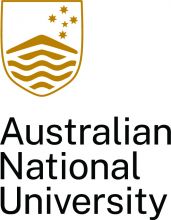Australia’s government is under increasing pressure to open its borders to foreign students amid concerns that the damage inflicted on educational institutions by plunging international enrolments is being downplayed.
Aviation, education and accommodation groups have reportedly joined three state governments in proposing trial admissions of overseas students under quarantine conditions.
The proposals coincide with new Education Department figures suggesting that four in five enrolled international students are now in Australia, having arrived before the borders closed or made their way via third countries.
Only about 121,000, or 20 per cent, of some 606,000 primary student visa holders were stranded outside Australia on 17 May – a statistic brandished by prime minister Scott Morrison when he was asked about the economic damage caused by plunging temporary visitor numbers during a 26 May address to the National Press Club.
“Eighty per cent of international students that come to Australia are here,” Mr Morrison said. “The way it’s talked about, you’d think that they weren’t. Our borders aren’t opening up any time soon.”
The figures, which have not been released publicly, show that the situation is slightly worse in higher education and the English-language teaching sector – a key feeder stream for universities – than in schools or vocational colleges.
Some 22 per cent of higher education students and 29 per cent of English students were outside Australia on 17 May. And 39 per cent of students from China – easily the most lucrative source country for universities – were stranded offshore.
The Education Department also stressed caveats to the data, saying the figures could include double counts and did not necessarily encompass all students or recently issued visas.
The International Education Association of Australia said the figures underplayed the impacts of the entry bans because they did not reflect the full intake that providers could have expected if the pandemic had not occurred.
Phil Honeywood, the association’s chief executive, said the data excluded students planning to start courses after semester one, along with thousands of people who typically arrived on working holiday or tourist visas and stayed on for study. In recent times, “onshore” applications for visas have driven the growth in degree-level enrolments from China and India.
Notwithstanding Mr Morrison’s insistence that the borders remain closed, the federal government – like its counterpart in New Zealand – has invited suggestions on how students could be allowed in safely.
Times Higher Education understands that only three states and territories – New South Wales, Victoria and South Australia – have produced such proposals, leaving universities and colleges in other jurisdictions at risk of missing out on any early influx of students.
“It’s been made clear that only those states and territories that have brought forward concrete proposals to National Cabinet will be able to have incoming cohorts of international students approved,” Mr Honeywood said.
The Australian National University said it was in “active discussions” with the Australian Capital Territory government about forwarding its own territory-level proposal. “We’ll be participating in whatever happens,” said vice-chancellor Brian Schmidt. “I’m focused on doing what is right for our students but also making sure we do not open Canberra and Australia more broadly to pandemic risk.”
THE understands that the federal government is separately developing measures to resolve confusion over visa rules during the pandemic, and to reboot visa processing that has stalled during coronavirus lockdowns.
Register to continue
Why register?
- Registration is free and only takes a moment
- Once registered, you can read 3 articles a month
- Sign up for our newsletter
Subscribe
Or subscribe for unlimited access to:
- Unlimited access to news, views, insights & reviews
- Digital editions
- Digital access to THE’s university and college rankings analysis
Already registered or a current subscriber?










